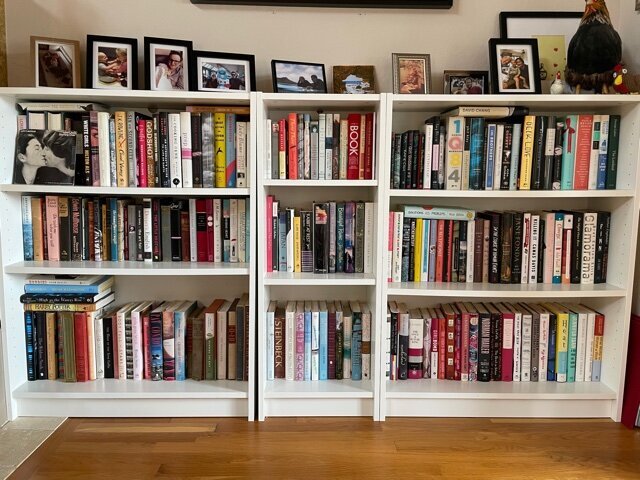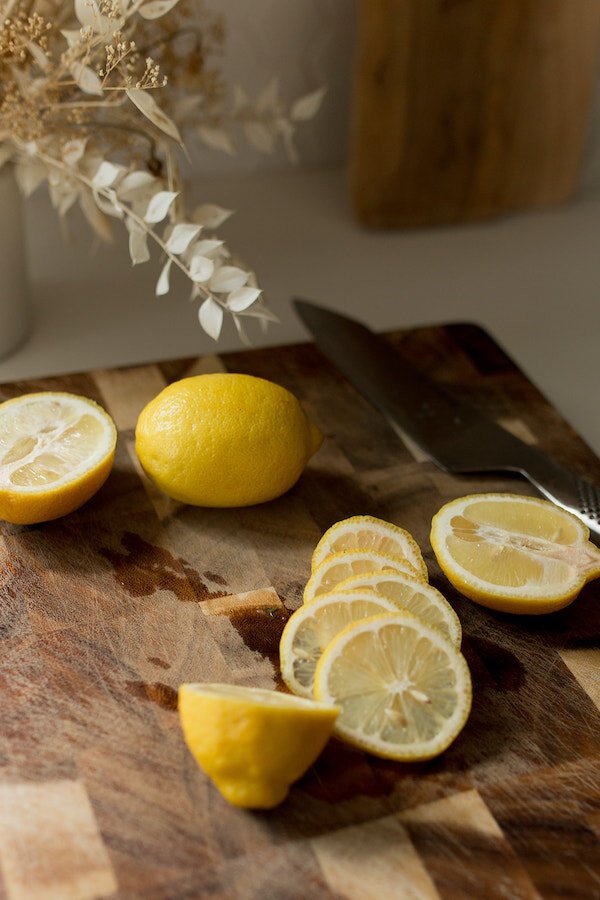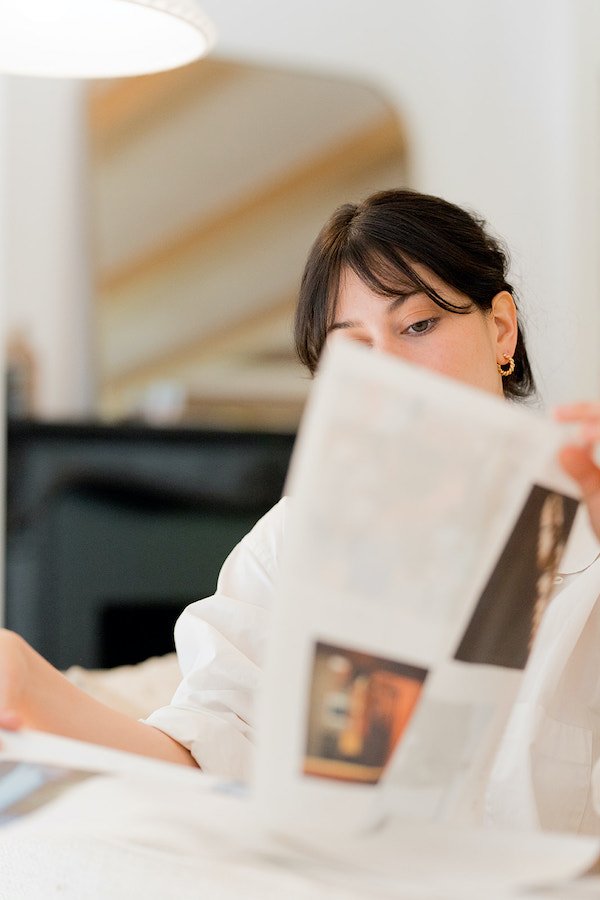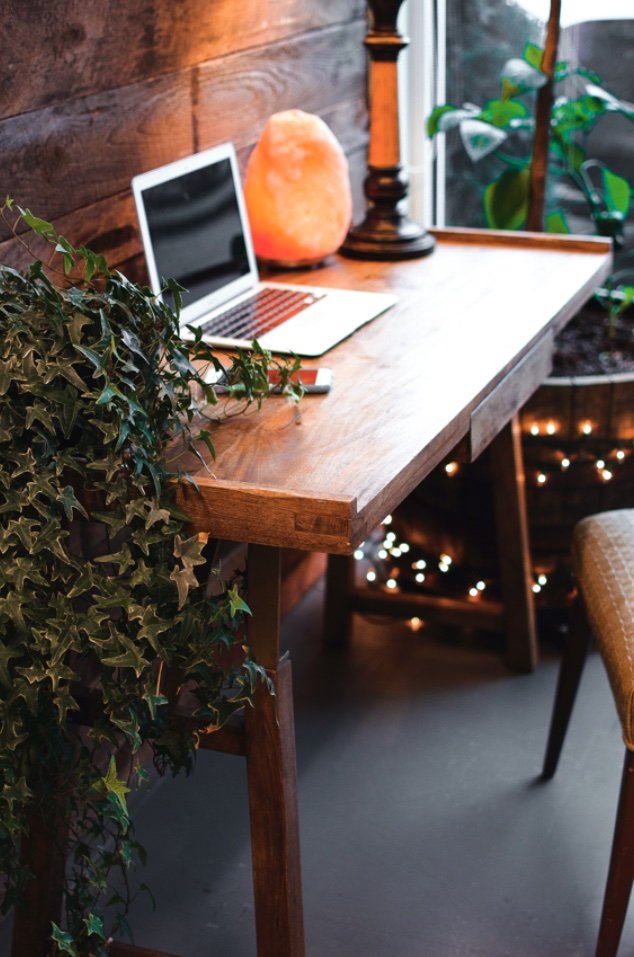
How To Organize Your Books And Create A Home Library
While most kids want to be astronauts or famous athletes when they grow up, I always wanted to be a librarian. I had my first home library when I was only eight. My grandma gifted me the entire Nancy Drew collection in a chest that I kept at the foot of my bed. By the time I was in high school, I had a towering bookcase filled with novels. And when I married a reader, my book collection nearly doubled.
“How do actual librarians and literary experts organize their collections?”
I didn’t end up becoming a librarian, but my affection for books has never wavered. And it shows in the stacks scattered haphazardly around my home.
I’ve recently been wondering: Do librarians cohabitate with literature towers too? How do the book experts organize their collections? Do they also have books lined up on every surface area? Or do they more carefully curate their shelves? (And how do those shelves not buckle?)
Thankfully, I was able to speak with four industry experts who offered me a novel’s worth of tips (as only expected). Read on for practical advice on curating your own home library, as well as a few unexpected tips!
1. Organize So You Can Easily Find Titles
There are a few ways you can organize your books at home. You may prefer to color code for an aesthetically pleasing look, or you may discover sorting by genre or alphabetically works best for you.
Lynn Lobash, Manager of Reader Services at The New York Public Library, organizes her home library by section, similar to how you’d find books in a public library or bookstore. “I [sort by] fiction, nonfiction, poetry, and graphic novels and simply arrange by title within the sections because I am more likely to remember a title than an author’s last name.”
View this post on Instagram
You can also organize by hardback and paperback. “The one thing I urge readers not to do is to organize their shelves by color,” says Megan Fishmann, Vice President/Associate Publisher, Publicity for Catapult/Counterpoint/Soft Skull Press.
“While it might look lovely, I promise you, it will be impossible to find a book… I once spent weeks searching for a book that I was convinced had an orange spine, only to discover it was navy blue all along!”
Alternately, Sharifah Williams, Managing Editor of Book Riot, embraces a more fluid organization process that is always up for reinvention: “Most recently, my nonfiction, fiction, cooking, and comic books were separated, and then sorted by size. But with an upcoming move, I anticipate (with the extra level excitement of a bookworm) yet another reorganization.”
Ultimately, you’ll want to organize however makes sense for you and your home. And remember, you can always rearrange.
2. Sort Through Your Stacks
I’ve had to come to terms with the fact that I can’t hold onto books forever; it’s good to know literary experts and librarians are regularly sorting their stacks, too. “I go through my shelves at least once a year,” says Lobash. “I also lend a lot of my books out to friends.”
Lupita Aquino (@lupita.reads), co-founder of LIT on H St bookclub, curates her collection bi-annually and donates or re-homes books she knows she won’t read again. “During the year, I do a lot of book buying and sometimes I forget the reason I bought a book […] I am learning unless I plan to read a book within the year I’ve bought it and it’s not a favorite author, I will most likely not end up reading it.”
“There is such joy in giving a book to someone else that you loved.”
While I’ve often donated my books to thrift stores, Fishmann encourages gifting to friends, too. “There is such joy in giving a book to someone else that you loved. So anytime (in pre-COVID days at least), someone would come over, they’d always end up leaving my place with several books in hand.”
She keeps a stack near her front door of books that need to go, so they are readily available when people come over (mental note to do this). For her kids’ books, they go to the local library.
For Williams, reorganizing and rehoming books is less planned. The need to “cull my stack usually strikes me out of the blue like a mundane prophecy,” she says. “Or after my cat takes down a stack of books in the hall during a bout of the zoomies.”
3. Create A To-Read Pile
In addition to displaying books around your home, you can also create a “to-read” pile, which will include the books you’re currently reading or the ones next up on your list.
For Aquino, she dedicates a shelf specifically to the books she’s reading throughout the year. “I love finishing a book and immediately adding the book to that shelf. Watching it grow makes me so happy.”
“Everyone [in our] home has their ‘to-be-read pile,’” Fishmann adds. “Whether it’s books stacked on my bedside table, my daughter’s books on a special shelf by her room, or a stack of books by the portable potty (as my son is learning to potty train)—these are the places we most frequently rotate the books we’re currently dipping into.”
Megan Fishmann keeps hardcovers and first-editions on a separate bookshelf
I like to keep my to-read pile on my nightstand and carry a book with me throughout the day—this helps me keep up with my reading goals. You never know when you’ll have a few spare moments to read!
4. Don’t Limit Your Books To Shelves
Not all your books need to go on the bookshelf, and they likely won’t if you live in a small space. While I dream of having a floor-to-ceiling library in my home someday, right now, it’s all about making my growing collection work for apartment living. This means keeping some books in storage and creating small collections throughout my home, like the stacks that double as a plant stand or the one currently holding up my laptop.
“Keep some books in storage and create small collections throughout your home, like stacks that double as a plant stand.”
Williams, who receives countless advanced reader copies from publishers, has stacks of books lining her hallways (😅 phew, so I’m not alone).
“Instagram-friendly as this may be, it’s not ideal for navigating my Portland apartment’s meandering layout and shows no sign of ebbing,” she explains. “But as a child, I fantasized about one day living among a cozy mess of books and pens like a wizard, so I guess I got my wish.”
The Fishmann household is no stranger to stacks everywhere, either. “We have books stored on shelves, in the kids’ room, in our room, in the cabinet where dishes should go, stored under the TV: If there’s a flat surface in the apartment, most likely, it’s got a book on it,” Fishmann says.
5. Take Care Of Your Books
One tip I often overlook myself when it comes to books? Care and cleaning.
“It is a good idea to pull everything, everything (!) off the shelves and wipe it all down once a year. This is a great opportunity to weed your collection,” Lobash recommends.
Aquino also pulls out her books to make sure the covers aren’t sticking together, and that mold isn’t growing. Wherever you decide to store your books, make sure it’s a place that doesn’t get damp, she says.
It’s also important to keep books out of direct sunlight. “Direct sun will bleach the covers of your book jackets, causing the color to fade over time (I learned this the hard way),” says Fishmann.
For Williams, her books “tend to be well worn, usually dog-eared and graced with coffee stains”—which is honestly much more my speed. Some of my favorite books are filled with notes and highlighter markings from book clubs and graduate school. However works best!
6. Make Your Library Unique To You
Lastly, and my favorite tip because it’s what really matters: Curate your home library so that it’s unique to you. It’s easy to get bogged down by social media depictions or think our libraries need to look a certain way. But who has time for that when there are so many wonderful stories to read? Reading is a deeply personal journey, and organizing your books should be the same. It is your home, after all.
“It’s easy to think our libraries need to look a certain way. But who has time for that when there are so many wonderful stories to read?”
“Something I love to do is anytime I receive a note or a card (whether it’s an anniversary card, a note from my daughter’s teacher, or a tiny drawing my son has made), is [to] randomly tuck it into books I’m reading,” Fishmann shares. “This way, each book serves as a mini-time capsule when you open it up in the future.”
Williams, a “sucker for book covers,” makes her shelves unique by turning beloved titles forward so that they’re front-facing. “ The Folio Society edition of I Know Why The Caged Bird Sings by Maya Angelou is one such recent beauty,” she shares.
But for a truly unique library? I’m dazzled by Aquino’s method. She keeps two shelves with the spines turned in. “I find that it’s actually a very interesting conversation starter.”
How do you curate your home library? Share your organization tips in the comments below! 📚
Kayti Christian (she/her) is a Senior Editor at The Good Trade. She has a Master’s in Nonfiction Writing from the University of London and is the creator of Feelings Not Aside, a newsletter for sensitive people.





